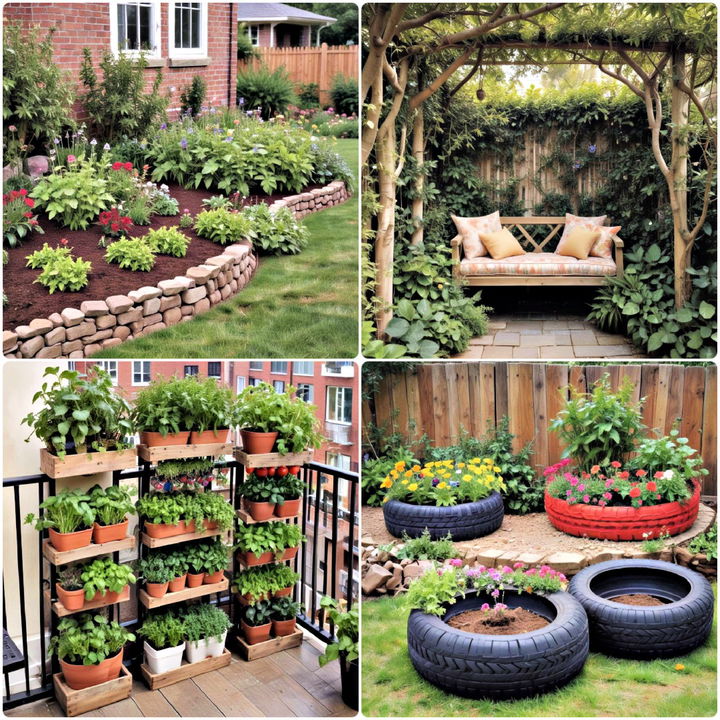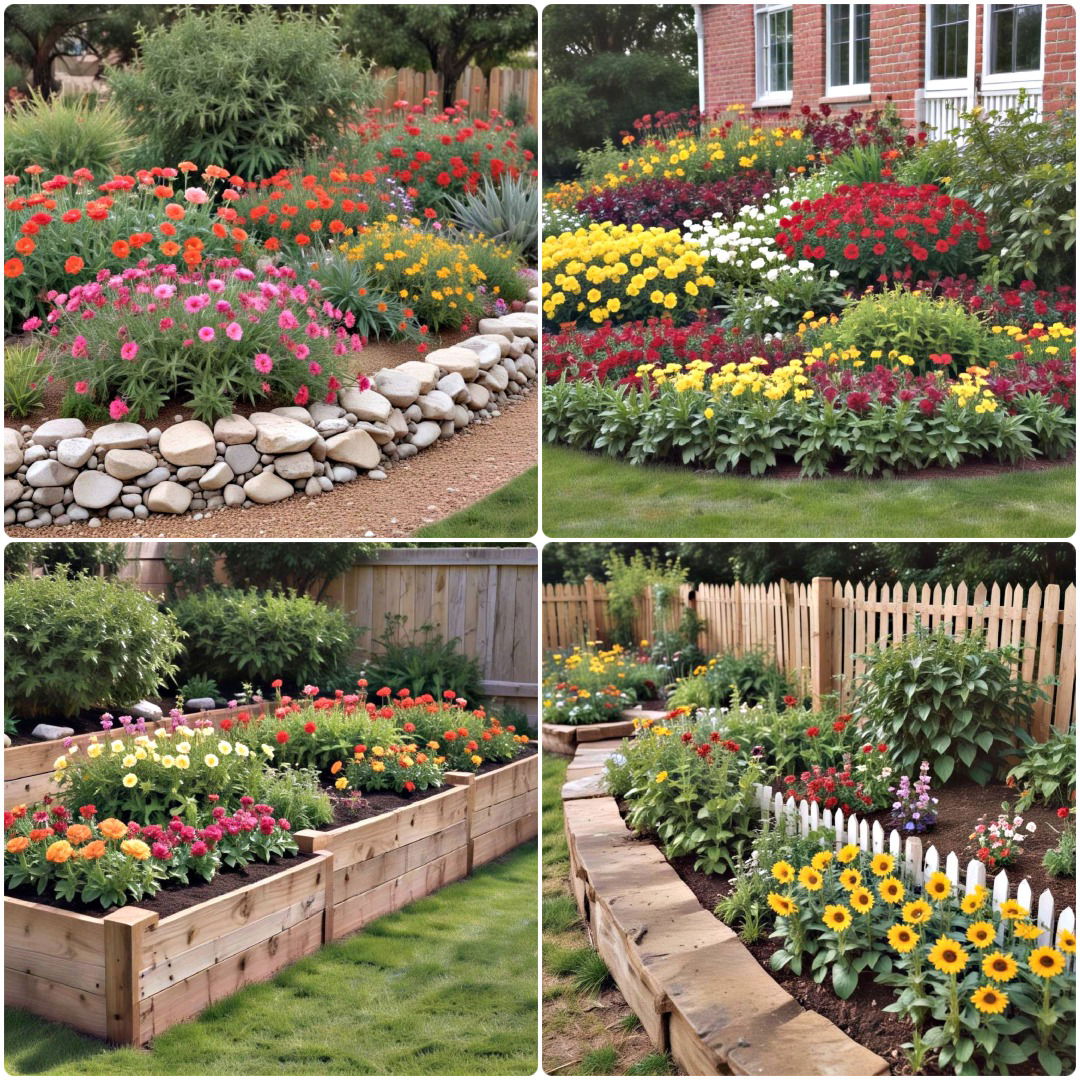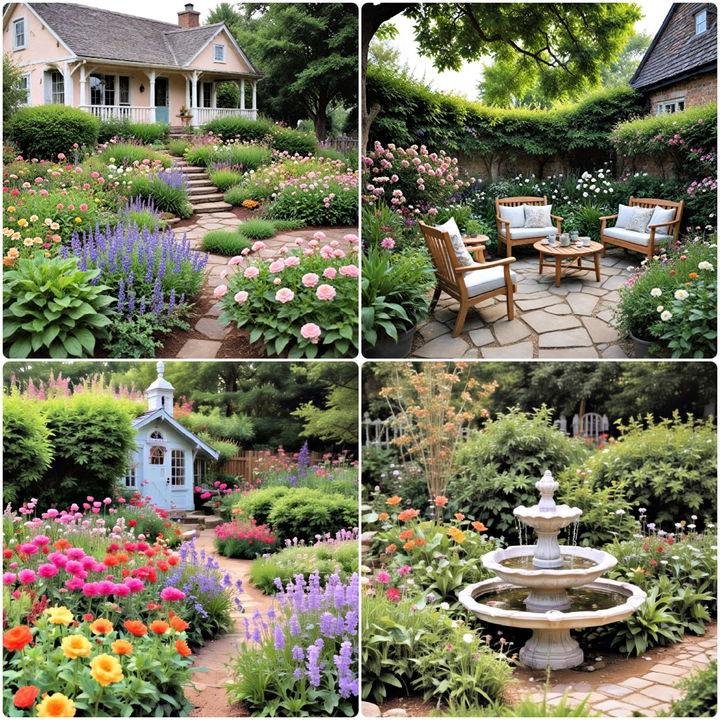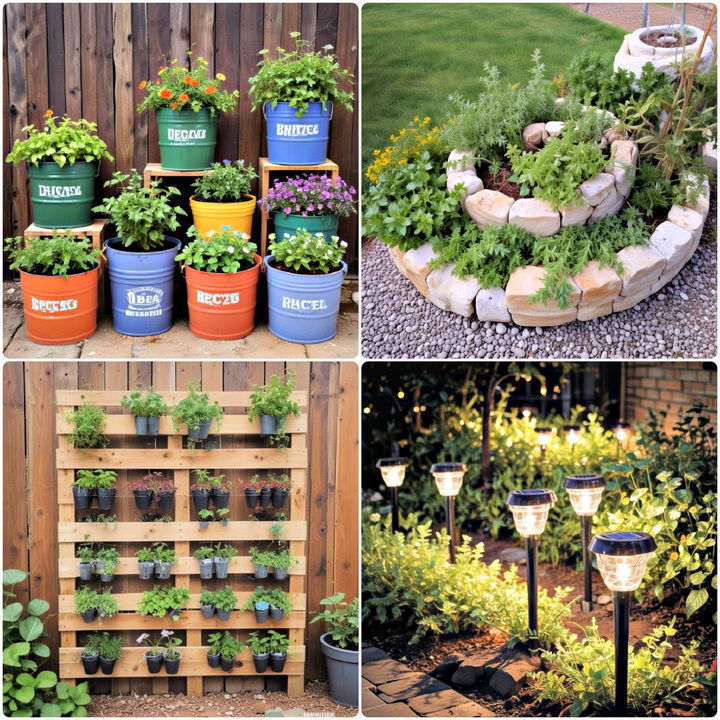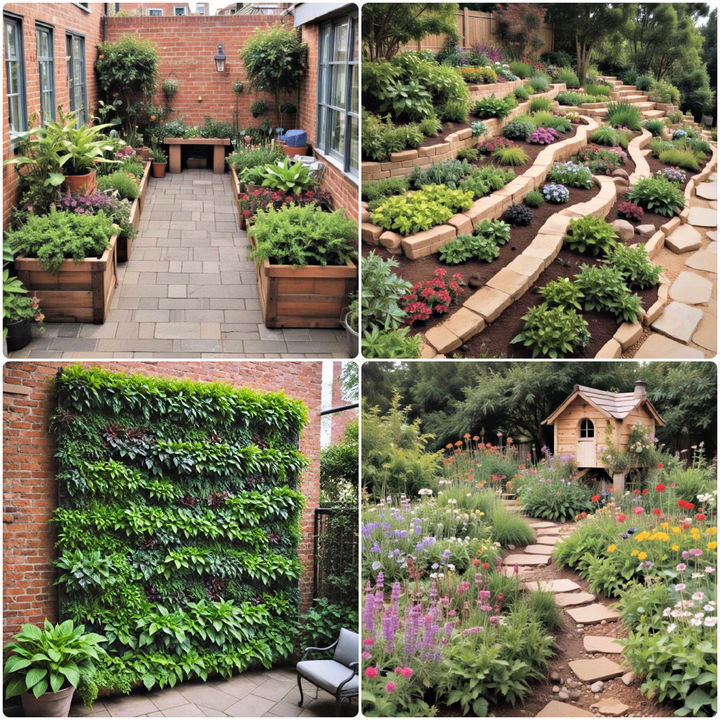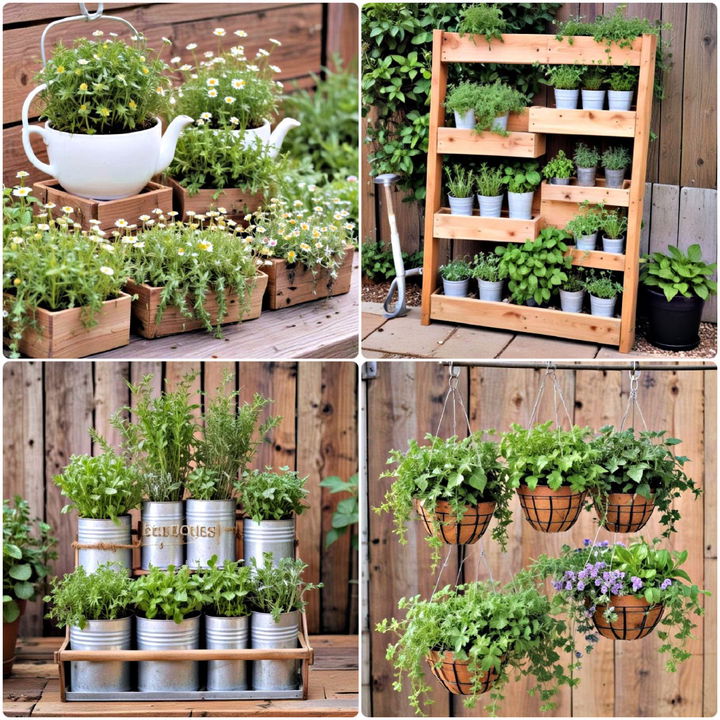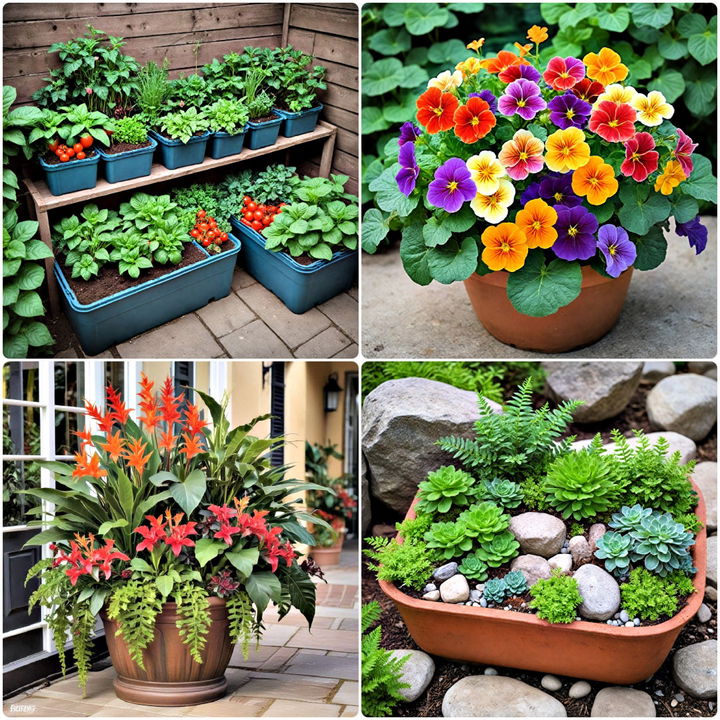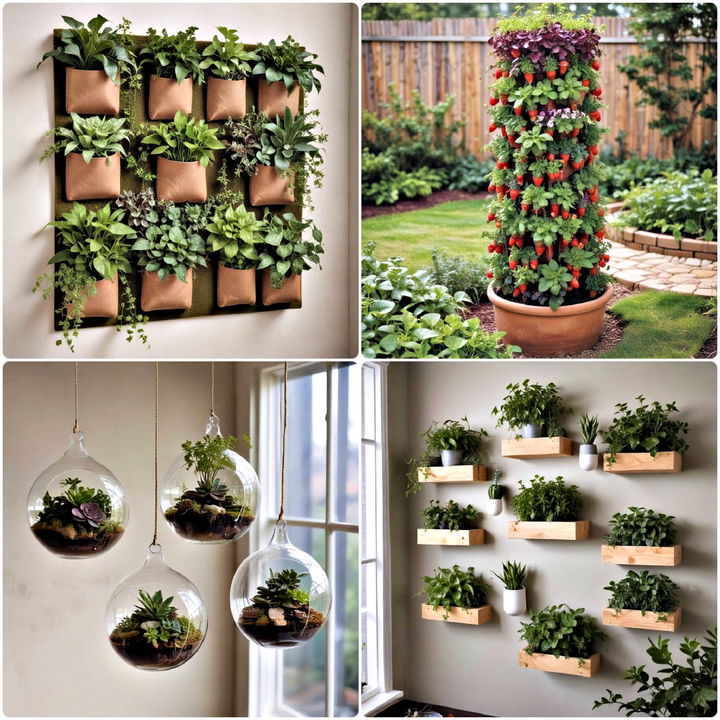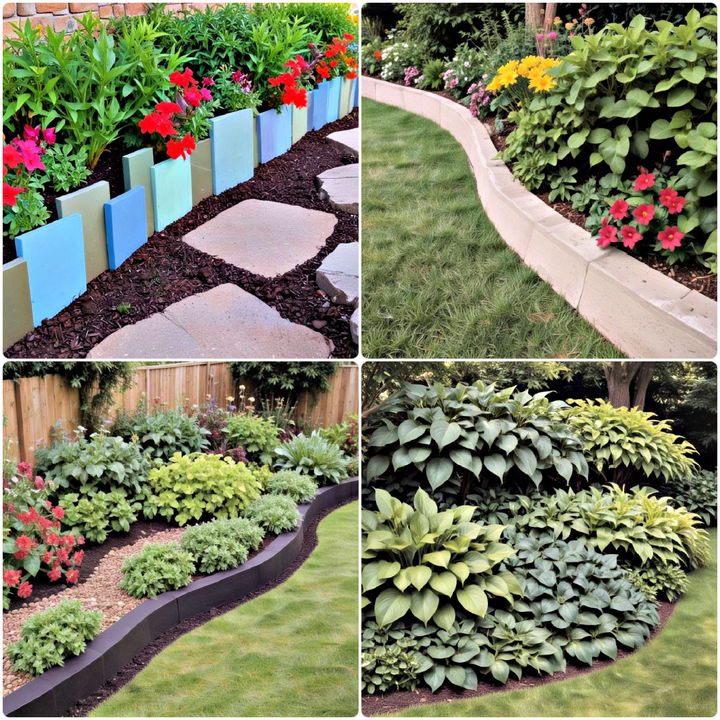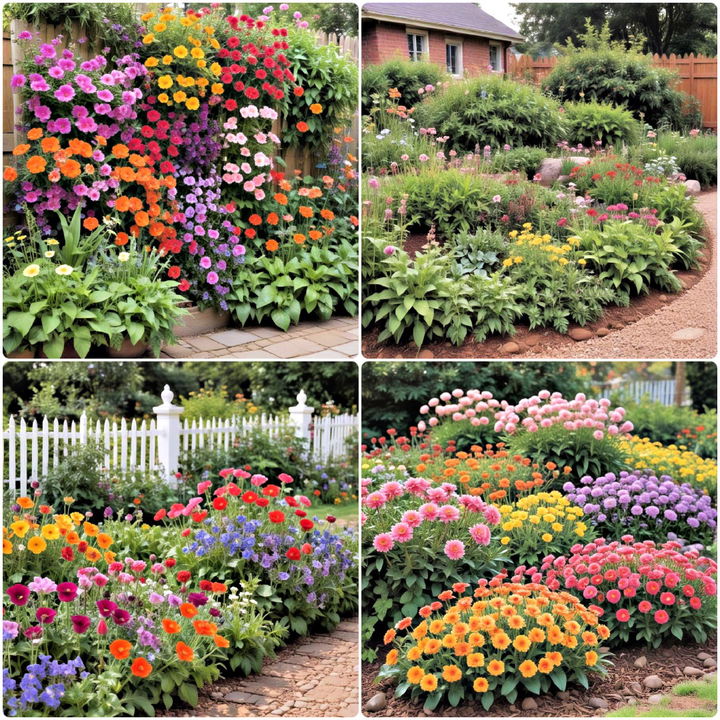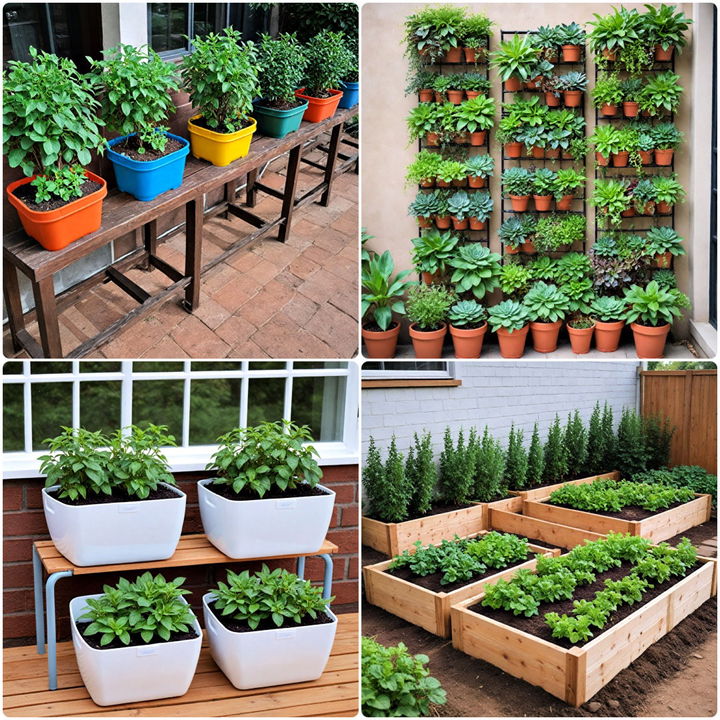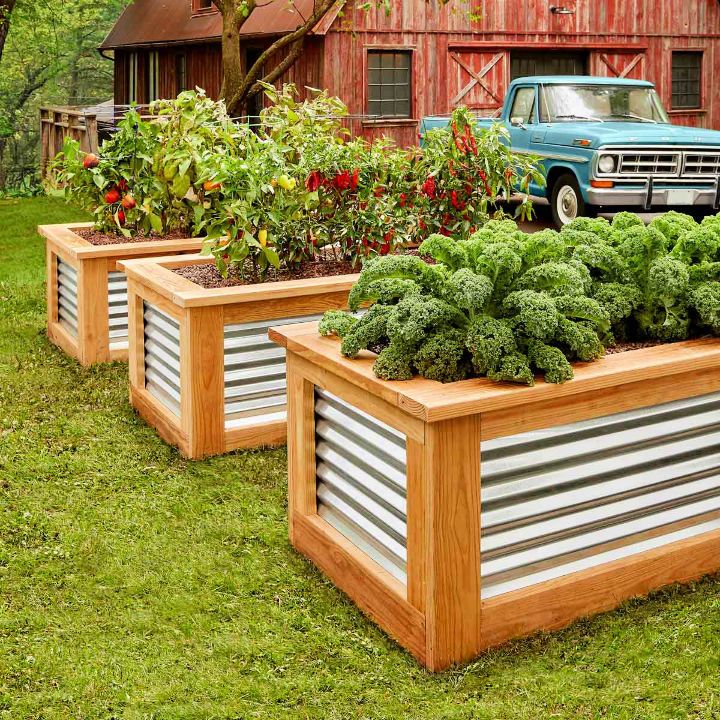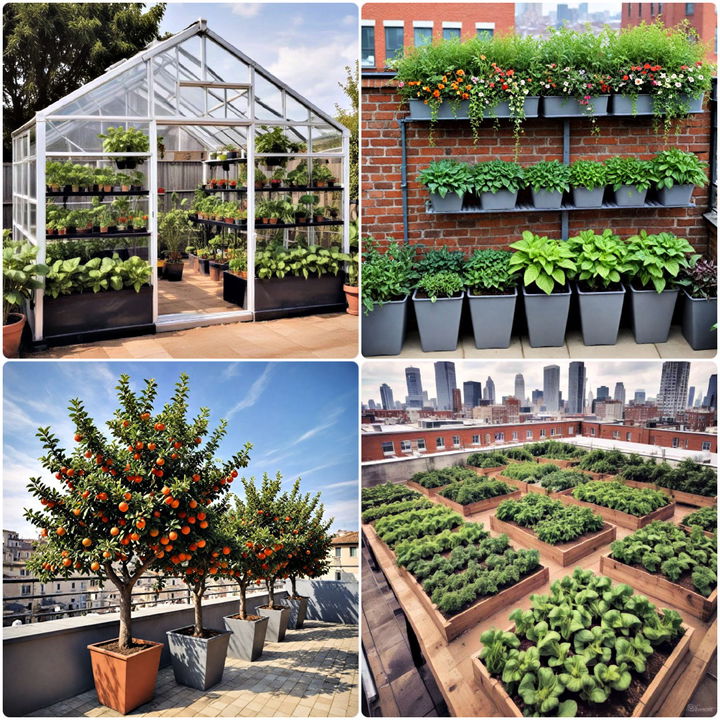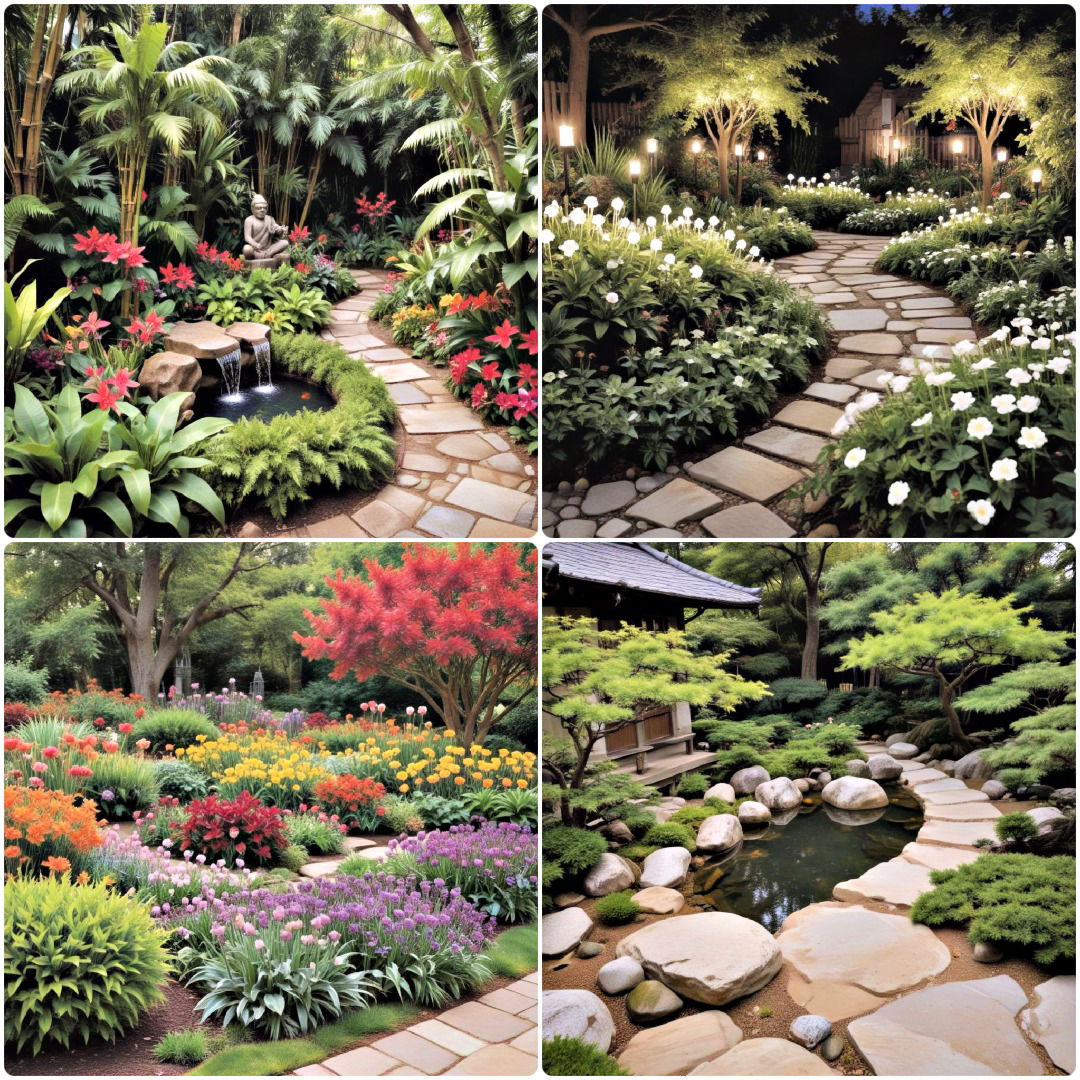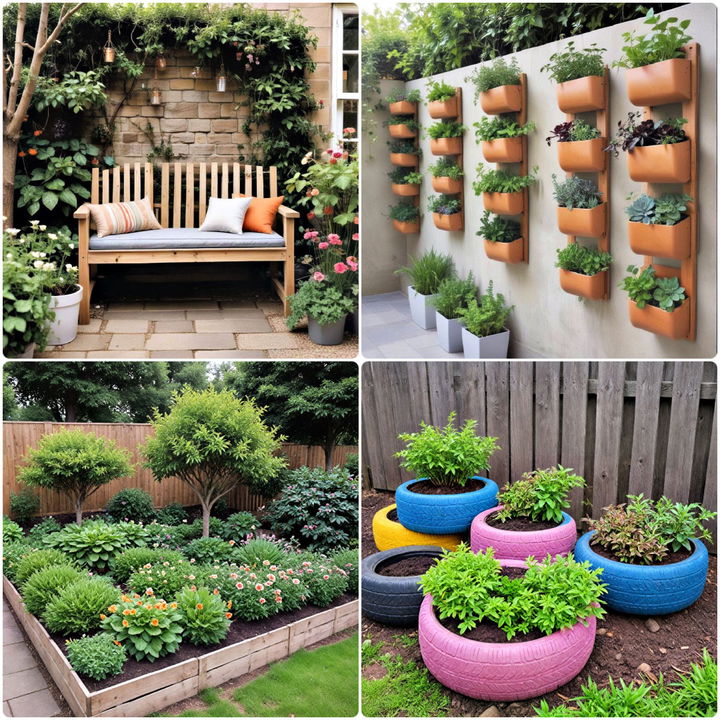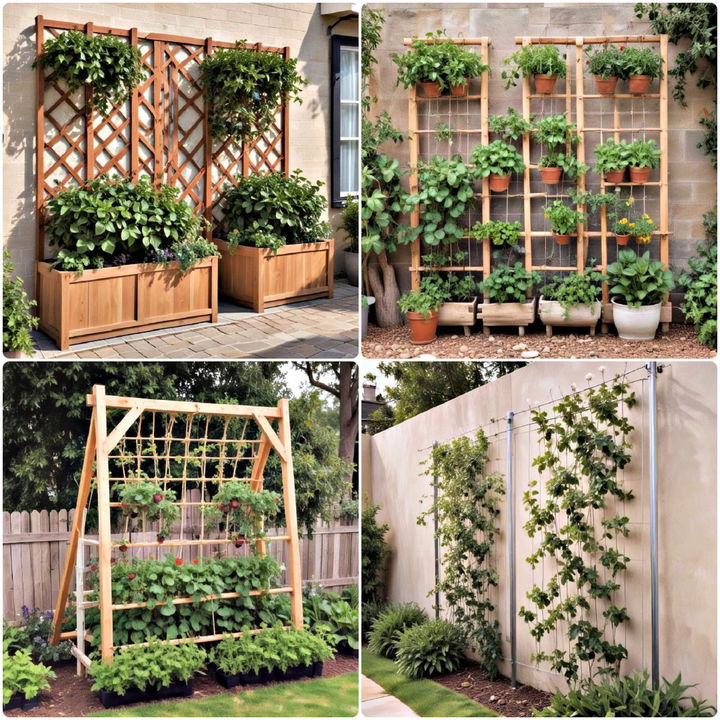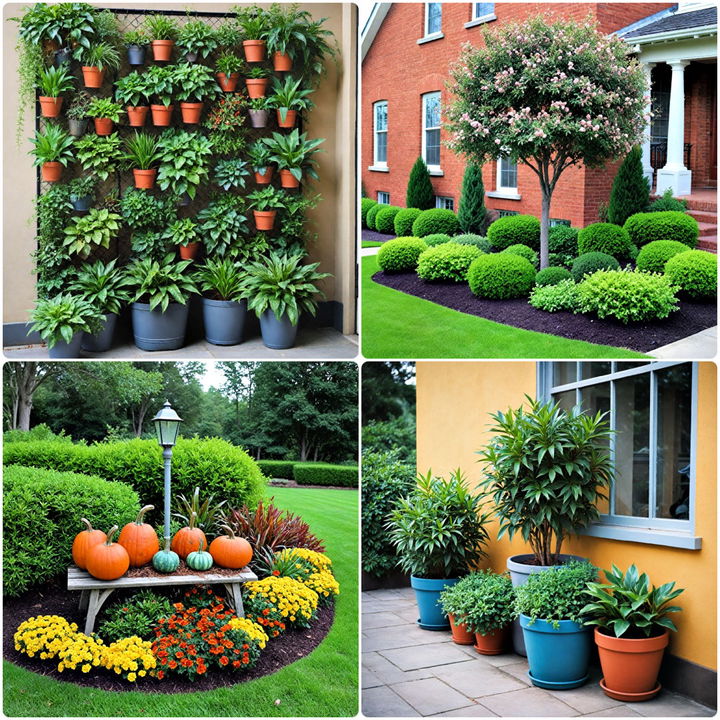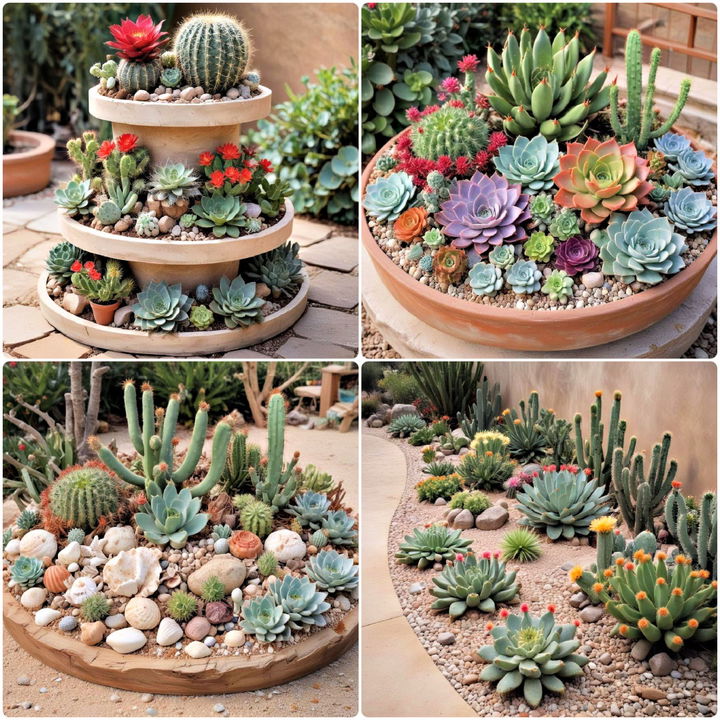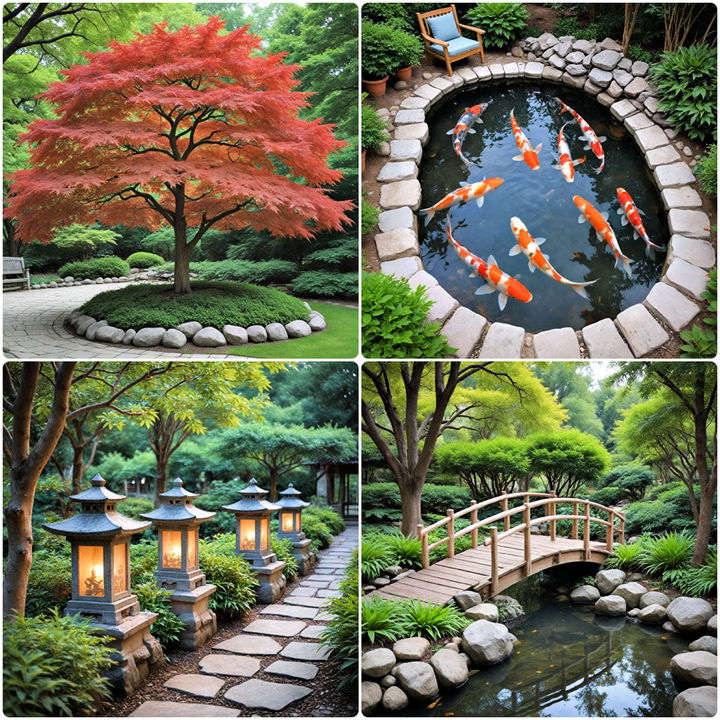Shade gardens offer a unique opportunity to transform those often-overlooked, dimly lit corners of your yard into thriving, tranquil havens. This guide aims to shed light on the beauty and potential of shade gardening, showcasing how you can cultivate a vibrant and inviting outdoor space even with limited sunlight.
Creating a shade garden isn't just about filling a space with plants; it's about embracing the unique atmosphere and possibilities that shade provides. Lush foliage, delicate blooms, and a sense of quiet serenity are just some of the benefits that await those who venture into the world of shade gardening. It's an opportunity to craft a sanctuary where you can escape the hustle and bustle of everyday life and reconnect with nature.
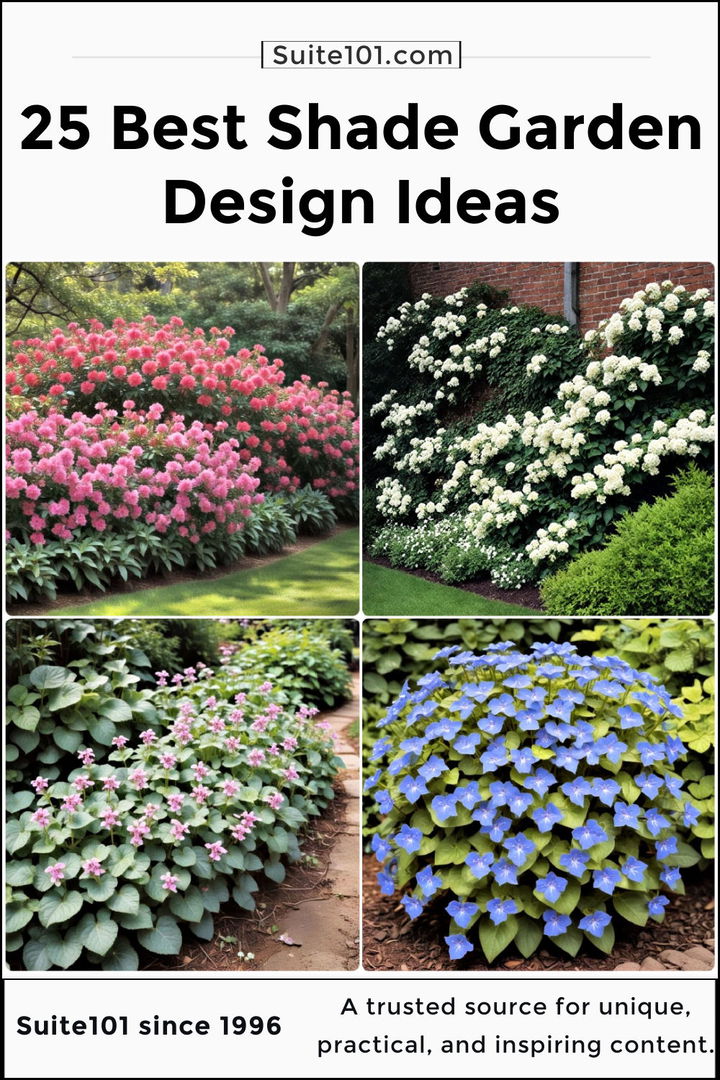
Prepare to be inspired by these 25 shade garden design ideas that will transform your shady yard into a verdant paradise. From selecting the perfect shade-loving plants to creating inviting pathways and seating areas, we'll explore the key elements of successful shade garden design. Whether you're starting from scratch or looking to enhance an existing space, you'll discover a wealth of ideas to cultivate a shade garden that thrives and delights.
1. Set the Scene with Hostas
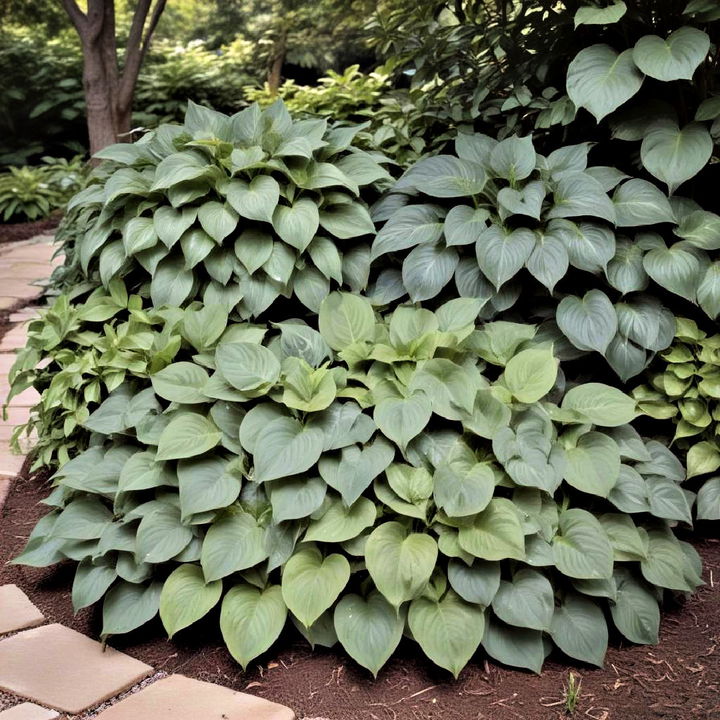
Hostas are perfect for shaded gardens due to their broad, lush leaves that create a serene atmosphere. They come in various shades of green, blue, and even variegated patterns. Besides being low-maintenance, Hostas are effective at ground covering, which helps keep weed growth at bay. Plant them for a combination of beauty and practicality.
2. Add Elegance with Ferns
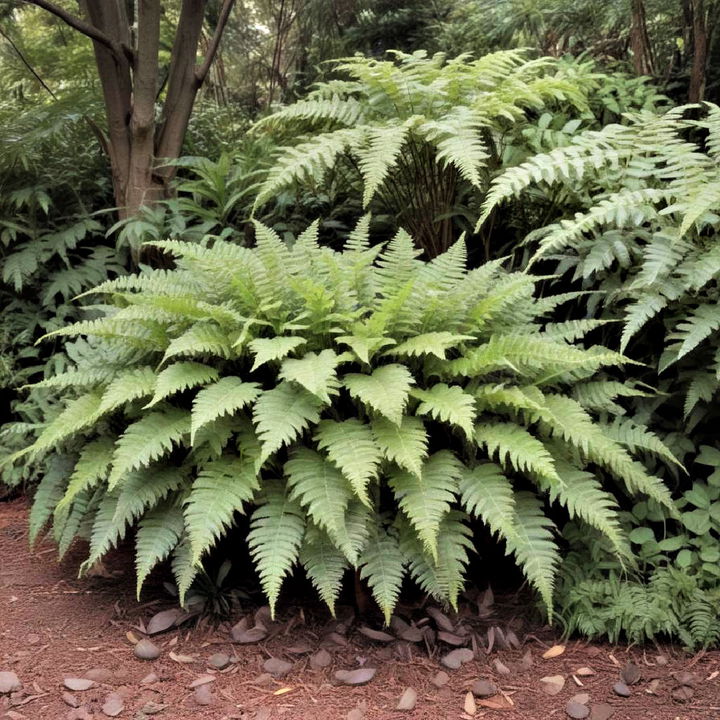
Ferns are a fantastic choice for adding texture and depth to shaded garden areas. They thrive in low-light conditions and provide a feathery, delicate look to your garden. Moreover, ferns are relatively easy to care for and come in a variety of types, making them versatile for any garden design.
3. Create Depth with Shade-Loving Shrubs
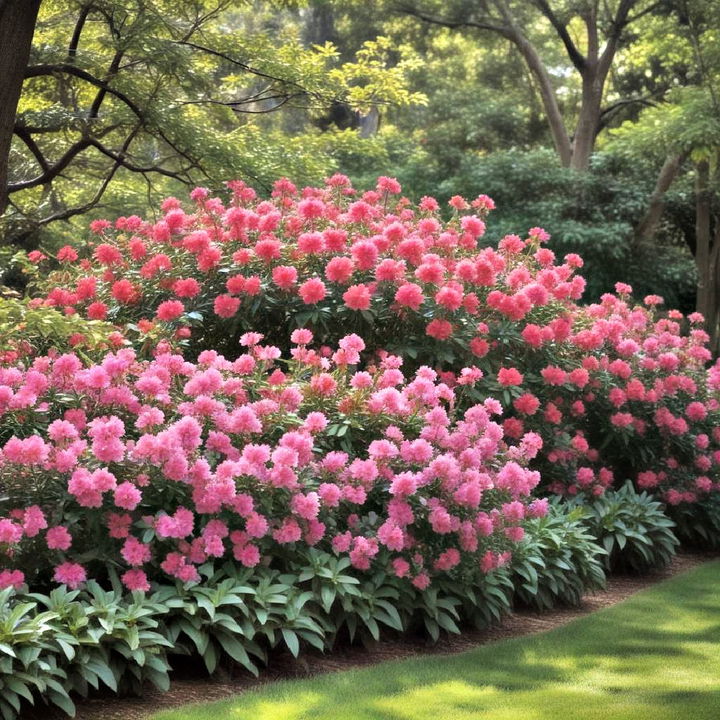
Discover creative shade garden ideas to transform your outdoor space into a lush retreat. Shade-loving shrubs like azaleas or rhododendrons offer beautiful blooms and provide structure to a shaded garden. Besides offering visual interest year-round, they can act as natural barriers or framing plants. Their varied shapes and sizes make them an excellent backdrop or focal point.
4. Brighten Up with Impatiens
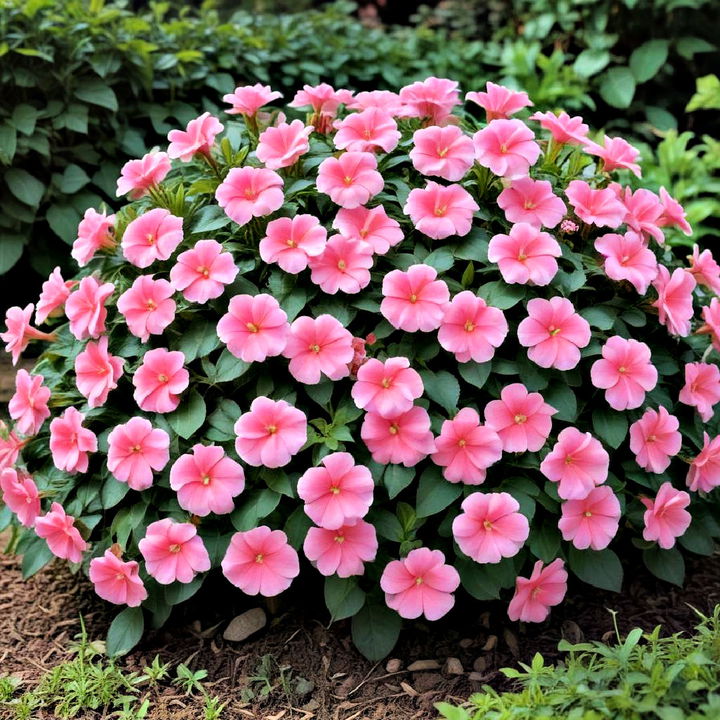
Impatiens are perfect for gardeners looking to add bursts of color in shaded areas. Known for their vibrant blossoms, these flowers can provide continual bloom from spring until frost. Moreover, they’re easy to plant and maintain, making them an ideal option for beginners.
5. Ground Cover with Pachysandra
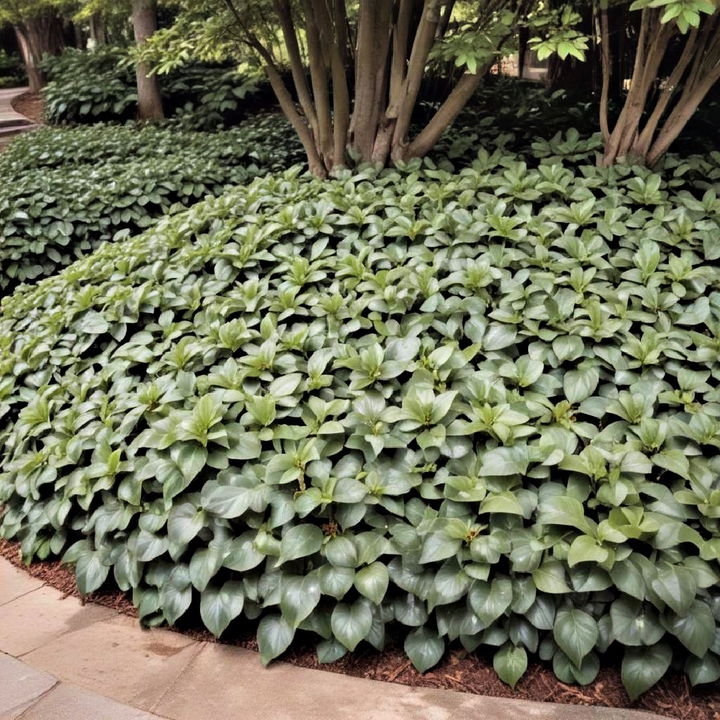
Pachysandra is an excellent ground cover plant for shaded spaces. It forms a dense carpet of green leaves, effectively preventing soil erosion and weed growth. Additionally, it's evergreen, offering year-round visual appeal. Plant pachysandra to keep your garden floor looking lush and well-maintained.
6. Use Hellebores for Early Blooms
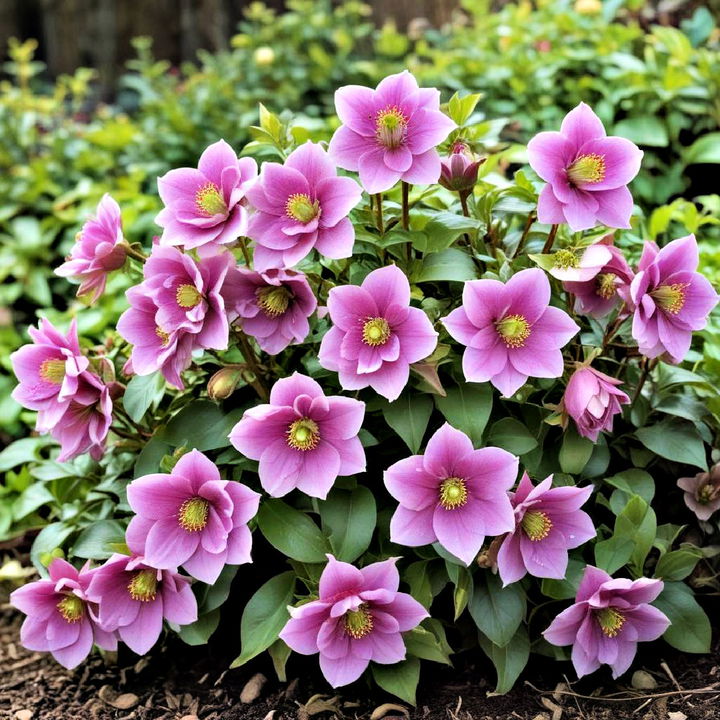
Hellebores, or Lenten roses, are known for their early spring blooms even in shady spots. Their flowers can range from white to deep purple, adding subtle elegance to your garden. Another bonus, hellebores are deer-resistant and low-maintenance, making them a gardener's favorite.
7. Light Up the Shade with Astilbes
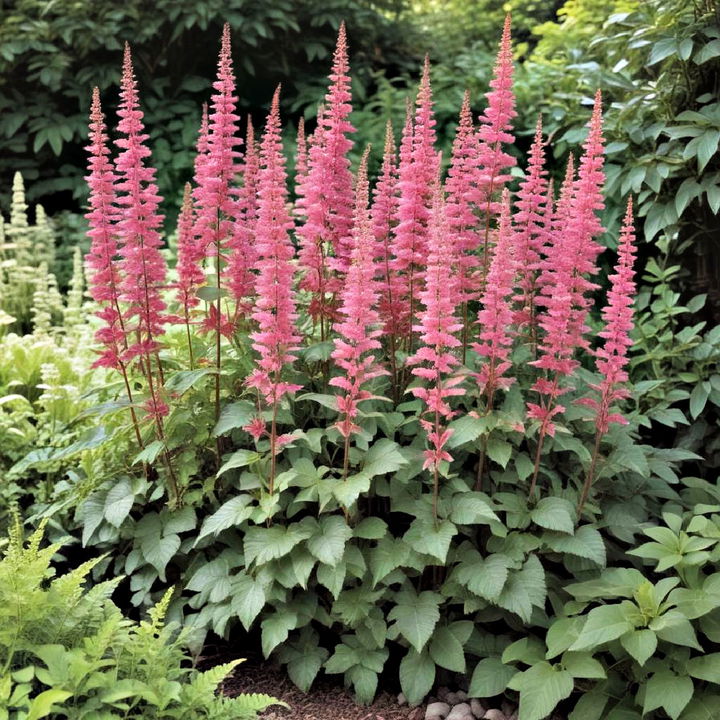
Astilbes provide feathery plumes of color in shades ranging from white to deep red. They thrive in moist, shaded environments, adding vertical interest to your garden. Additionally, their blooms can last for several weeks, offering extended periods of beauty and charm.
8. Add Versatility with Heuchera
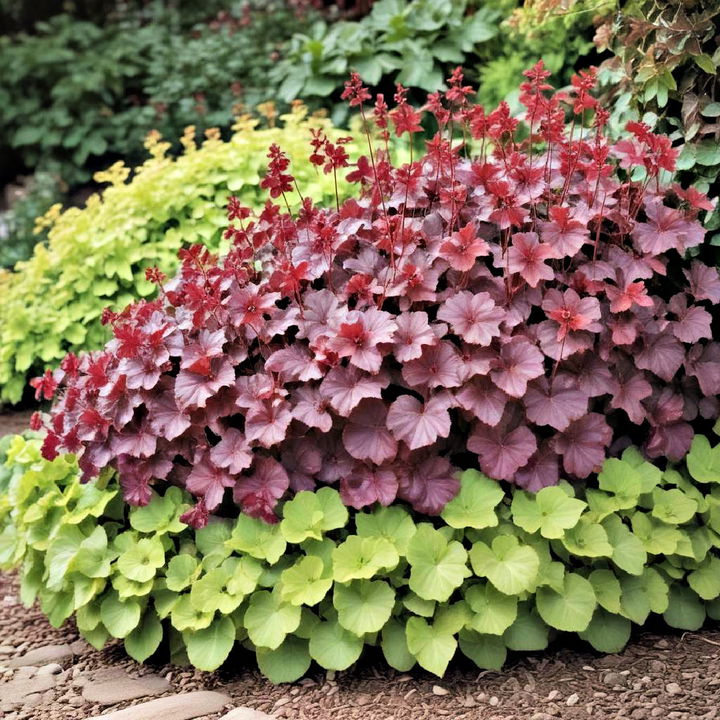
Heuchera, also known as Coral Bells, provide a variety of leaf colors—from burgundy to lime green—ideal for shaded gardens. They are drought-resistant and attract pollinators like butterflies. Added around pathways or borders, Heuchera adds versatility and visual interest.
9. Accent with Japanese Forest Grass
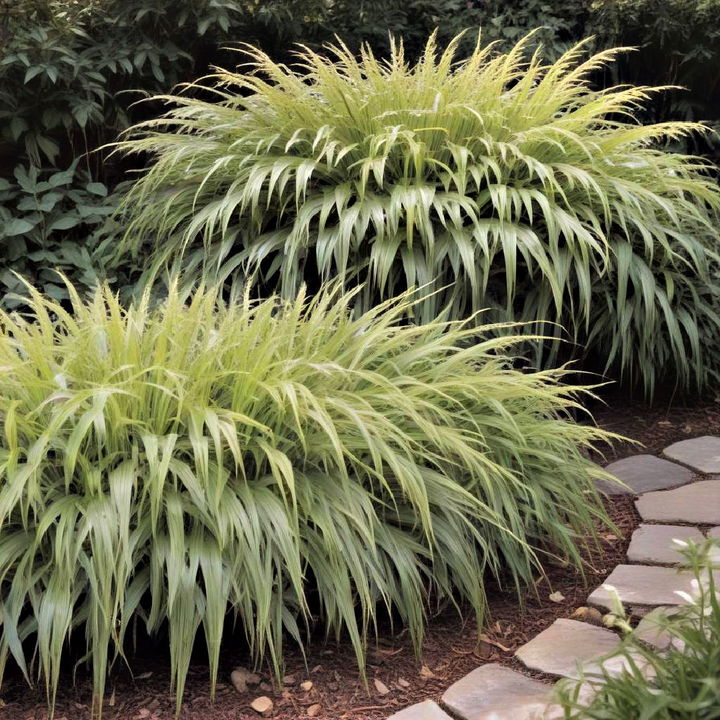
Explore beautiful perennial shade garden ideas that thrive in low-light conditions for lasting beauty. Japanese Forest Grass (Hakonechloa) provides a soft, flowing texture ideal for shaded gardens. This ornamental grass has a cascading habit and can range from bright green to golden yellow. Additionally, it requires minimal care and adds movement and grace to garden designs.
10. Finish with Climbing Hydrangeas
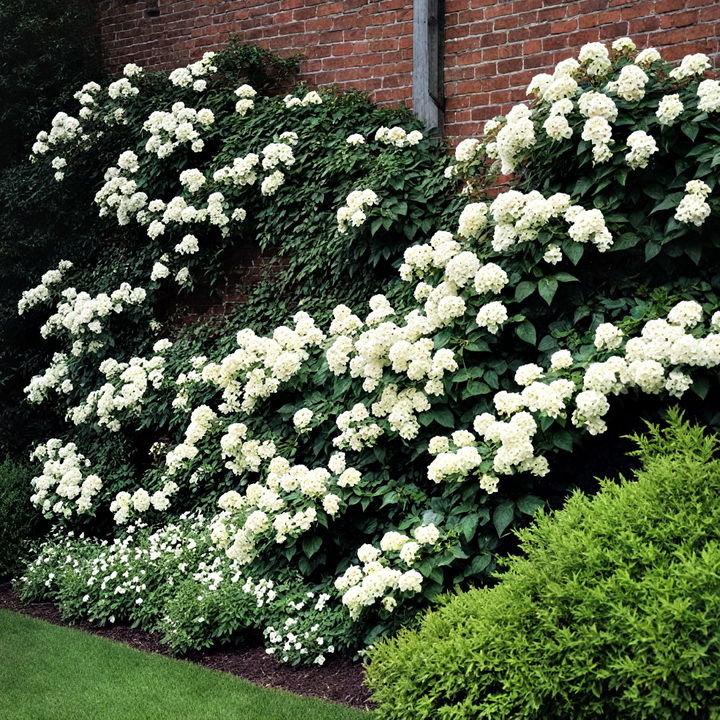
Climbing hydrangeas are perfect for adding vertical element to your shaded garden space. They can adorn fences, walls, or trellises with beautiful clusters of white flowers. These climbers are also hardy and require minimal maintenance, making them an excellent finishing touch.
11. Charm with Bleeding Hearts
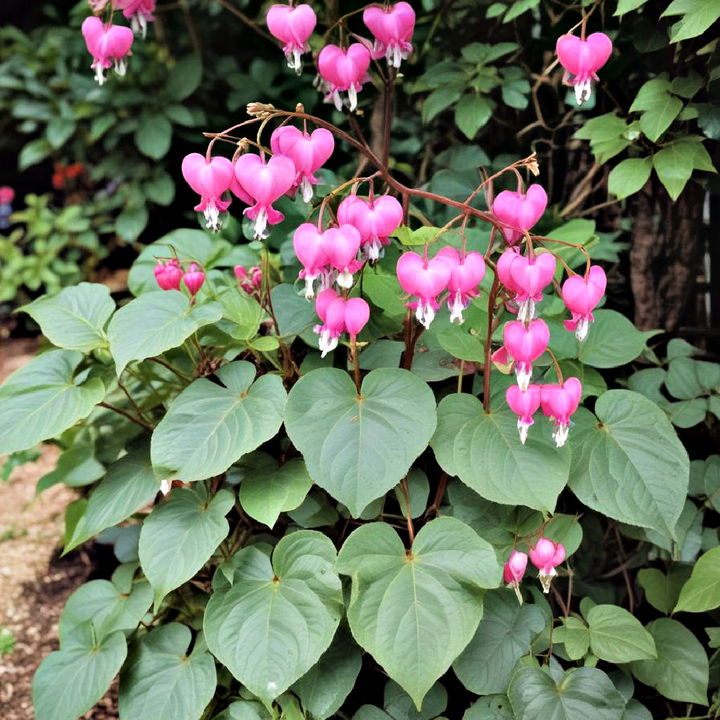
Bleeding Hearts bring a touch of romantic elegance to shaded gardens with their heart-shaped, pink or white flowers. They thrive in cooler, shaded environments and bloom in spring to early summer. Additionally, these plants attract hummingbirds, adding an extra layer of charm and life to your garden.
12. Go Native with Trilliums
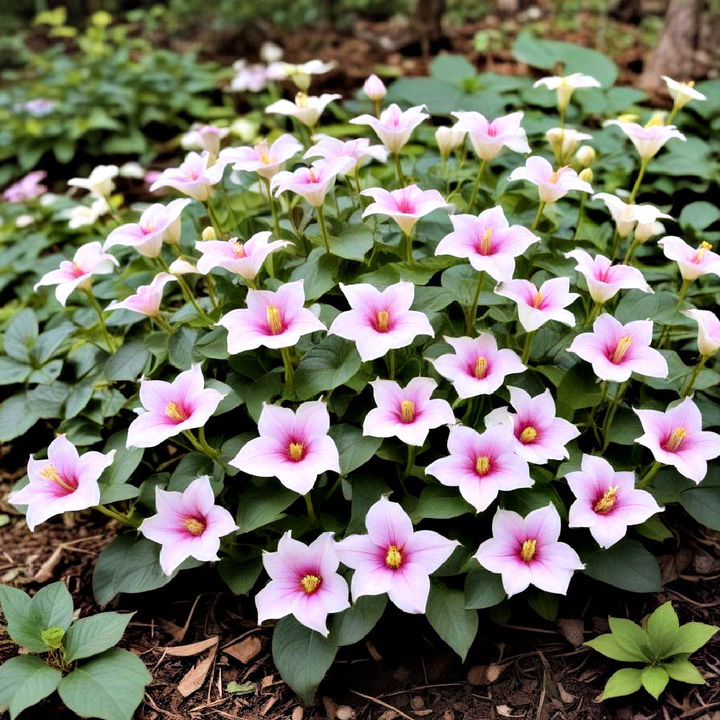
Trilliums are native wildflowers ideal for shaded areas. They come in various colors like white, pink, and red, offering a woodland feel to any garden. Not only are they low-maintenance, but they also promote local biodiversity and fit naturally into forest garden settings.
13. Soften Edges with Brunnera
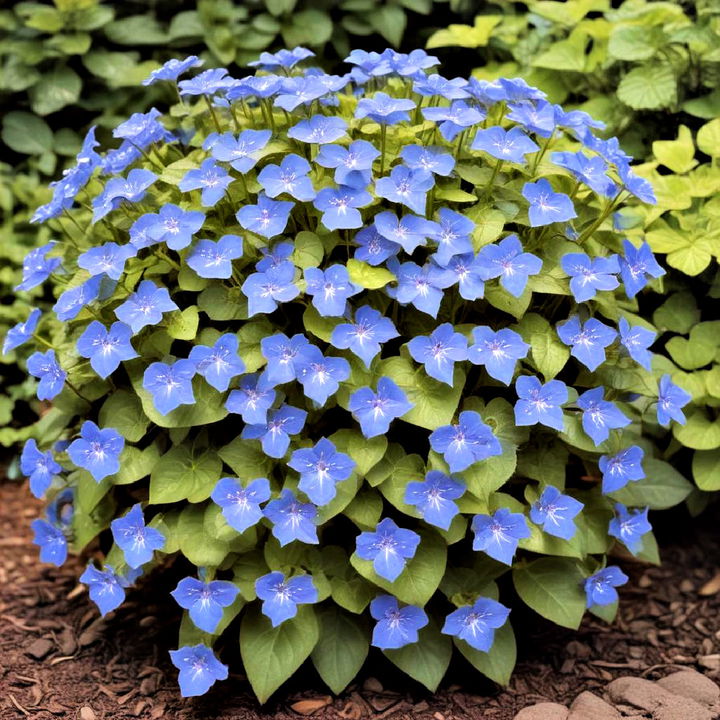
Brunnera, also known as Siberian Bugloss, features bright blue flowers and heart-shaped leaves, perfect for shaded garden corners. Its foliage provides texture, and the small blue blooms add a pop of color in the spring. Moreover, Brunnera is deer-resistant and low-maintenance.
14. Add Spice with Toad Lilies
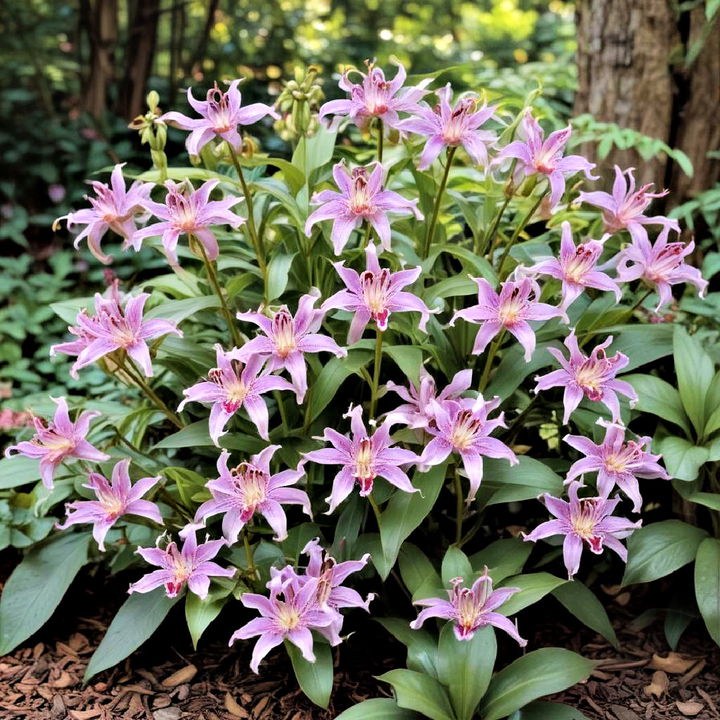
Toad Lilies add an exotic flair to your shaded garden. Their orchid-like flowers bloom in late summer to fall, offering a unique beauty when most other flowers are fading. Apart from their stunning looks, they are easy to grow and require minimal care, providing long-lasting impact.
15. Naturalize with Wood Anemones
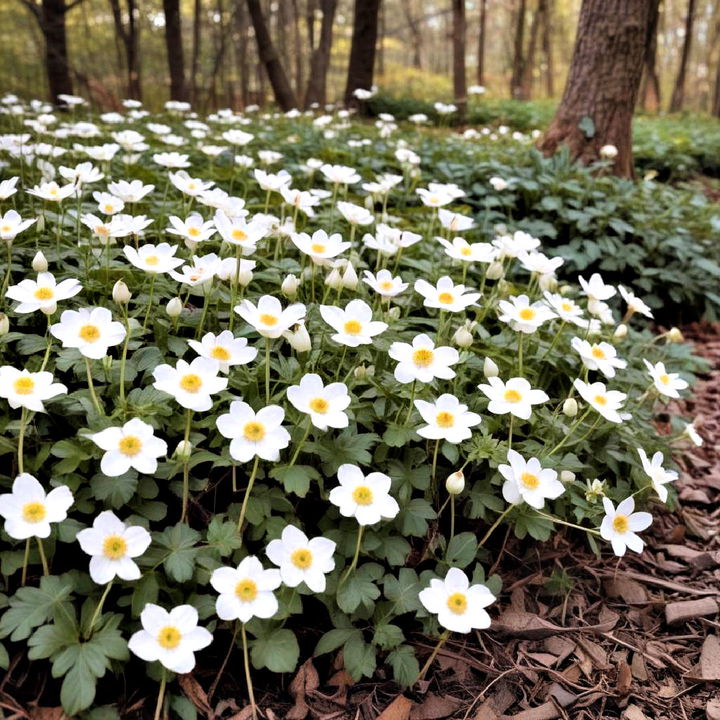
Find inspiration for stunning shade gardens that enhance your yard while providing cool retreats. Wood Anemones offer delicate white or pink flowers that naturalize easily in shaded areas. These ground-hugging perennials spread via rhizomes, creating a blanket of blossoms in the spring. They’re ideal for woodland gardens and do an excellent job of filling in gaps.
16. Elegance with Japanese Painted Fern
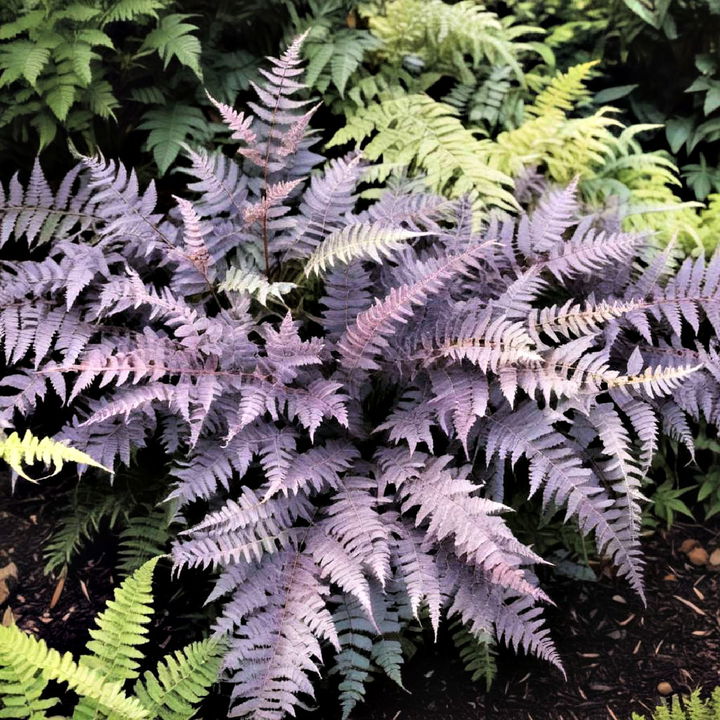
The Japanese Painted Fern brings a splash of color to shade gardens with its silvery, blue-green fronds. This fern adds texture and subtle elegance to shaded spots. Plus, it’s hardy and low-maintenance, making it a top choice for busy gardeners looking to add sophistication.
17. Provide Structure with Boxwoods
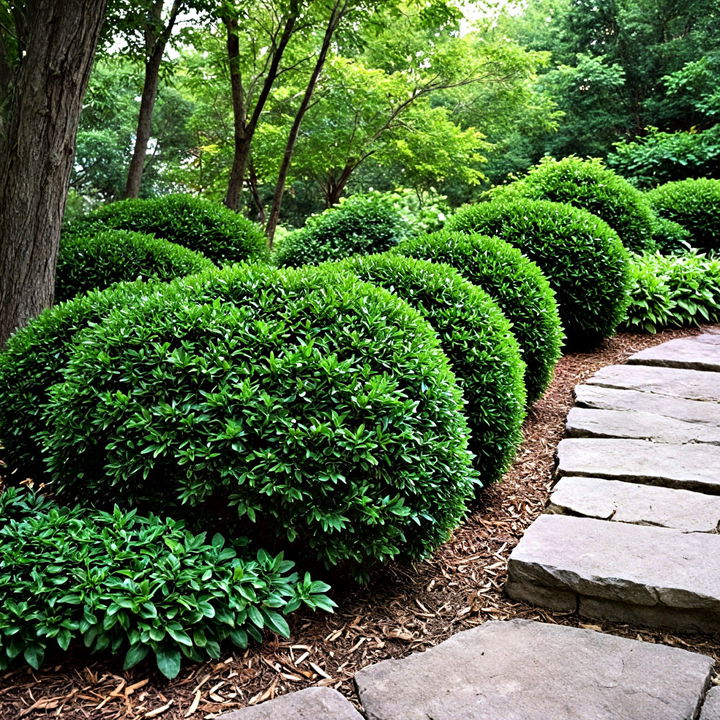
Boxwoods are evergreen shrubs that thrive in partial shade. They’re excellent for creating formal garden borders or topiaries. Boxwoods offer year-round structure and can be easily shaped to your design preference. Their dense foliage also acts as a great backdrop for seasonal flowers.
18. Underplant with Lily of the Valley

Lily of the Valley is perfect for shaded garden beds under taller plants or trees. These perennial plants produce fragrant, bell-shaped white flowers in spring. They spread quickly, providing an effective ground cover. Their delightful fragrance is an added bonus to their lush green foliage.
19. Color Pop with Lungwort

Lungwort offers unique spotted leaves and bright blooms, ideal for shaded areas. These perennials flower in early spring with colors ranging from pink to blue. Lungwort is also highly resistant to pests and diseases, making it a durable yet attractive choice for gardeners.
20. Soften Pathways with Lamium
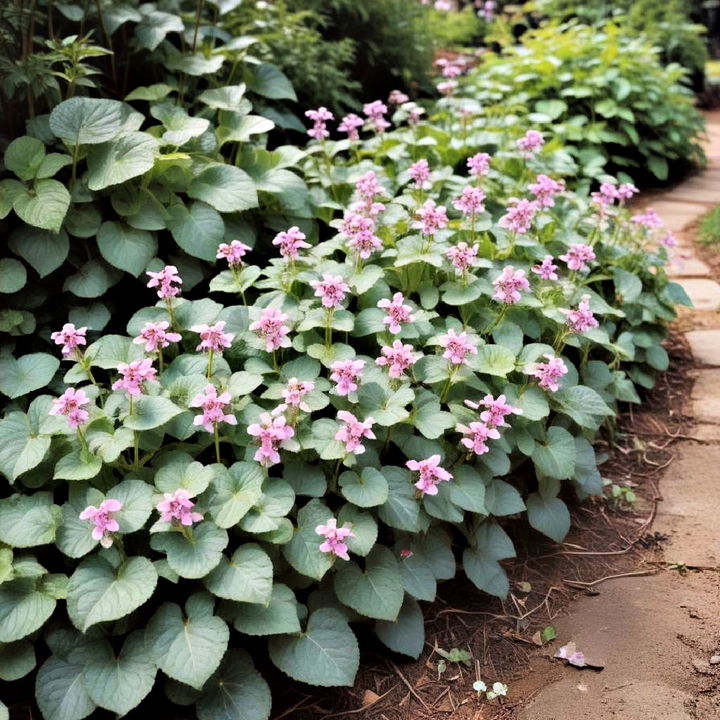
Lamium, or Dead Nettle, is a versatile and resilient ground cover for shady areas. Its variegated leaves and small flowers can brighten up garden pathways and borders. Lamium is fast-growing and low-maintenance, providing excellent weed suppression while adding visual interest.
21. Add Color with Columbine
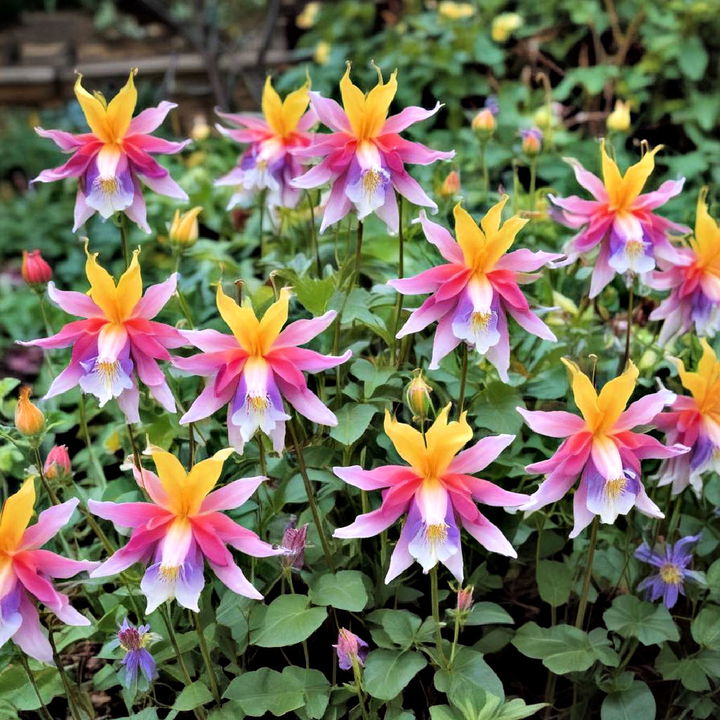
Columbine brings whimsical allure to shaded gardens with its unique, multi-colored flowers. Blooming in late spring to early summer, these plants attract hummingbirds and create visual interest. Columbine is relatively drought-tolerant and adds subtle height and dimension to your shaded garden spots.
22. Soften with Creeping Jenny
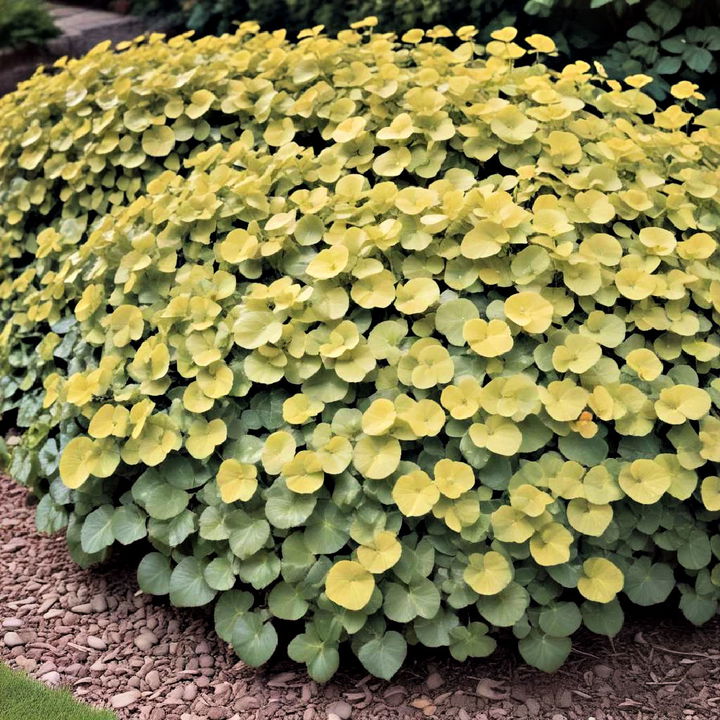
Creeping Jenny, with its trailing, golden foliage, is ideal for softening garden edges and filling in gaps. This ground cover thrives in shaded areas and provides a lush, carpet-like effect. It's also easy to care for, making it an attractive choice for adding vibrant color and texture.
23. Create Drama with Elephant Ears
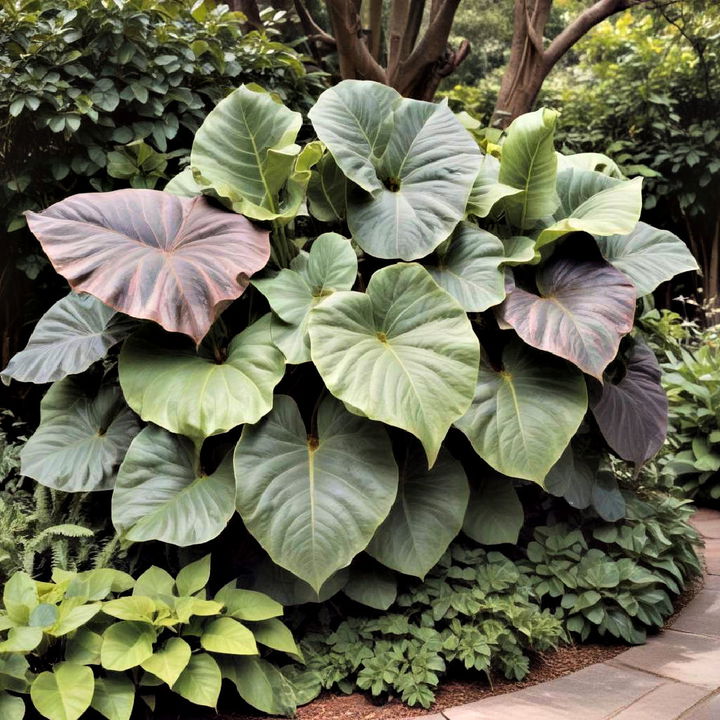
Learn how to maximize your shady garden areas with plants that flourish in low sunlight for vibrant landscapes. Elephant Ears, known for their large, striking leaves, bring a dramatic flair to your shaded garden. These plants can also serve as focal points or background foliage. Besides their bold appearance, they are relatively low-maintenance, adding both height and tropical vibes to shaded areas.
24. Ground Cover with Sweet Woodruff
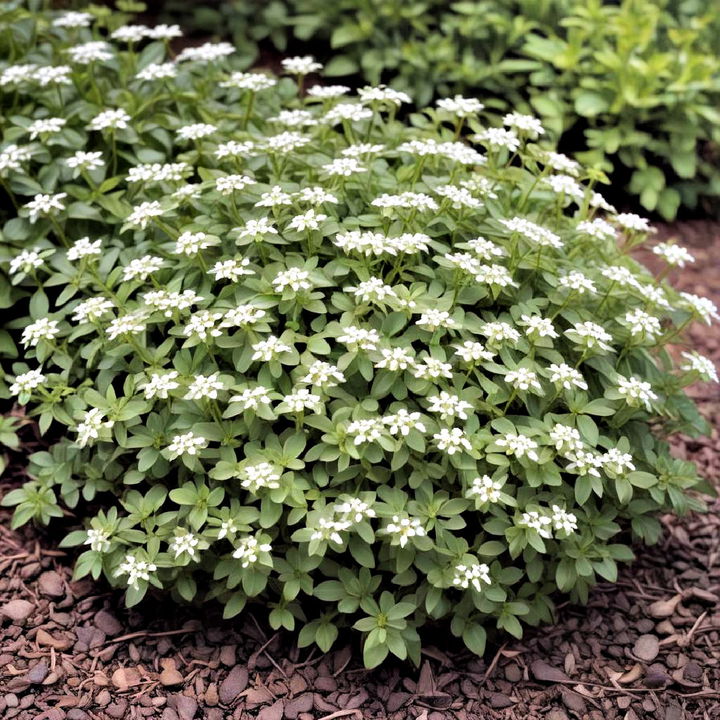
Sweet Woodruff is a fantastic ground cover that thrives in shady spots. Its small white flowers appear in spring, and its leaves emit a pleasant fragrance when crushed. This plant not only adds a lush, green carpet to your garden but also helps keep weeds in check.
25. Accentuate with Ajuga
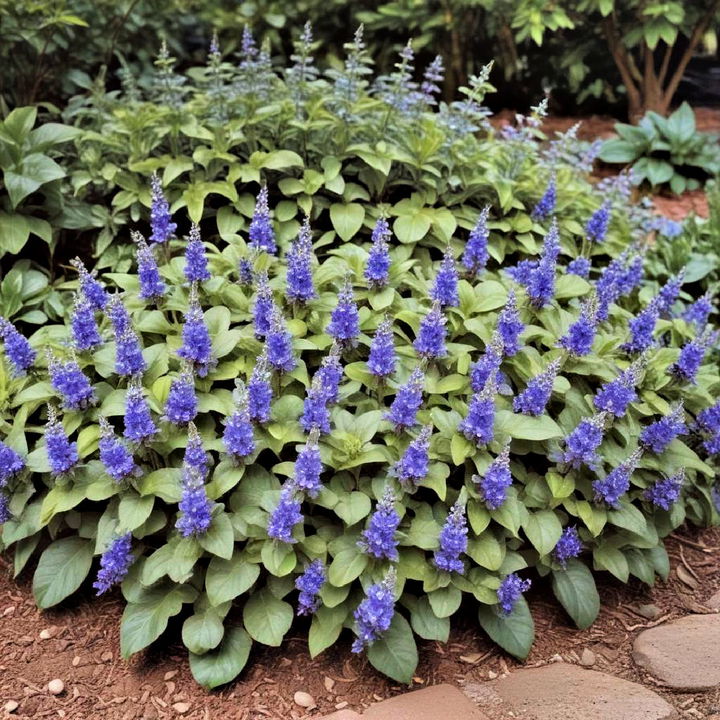
Ajuga, or Bugleweed, offers vibrant foliage and spikes of blue, purple, or white flowers, making it perfect for shaded gardens. This hardy ground cover spreads quickly and adds color and texture to garden paths and borders. Its evergreen nature ensures year-round appeal with minimal care.
Conclusion:
Shade gardens are a testament to the resilience and beauty of nature, proving that even in the absence of abundant sunlight, a thriving and enchanting outdoor space is possible. By embracing the unique conditions of shade and selecting the right plants, you can create a garden that offers a sense of tranquility, beauty, and connection to the natural world.
Key Points:
- Embrace Shade-Loving Plants: Choose plants that thrive in low-light conditions.
- Layer Your Planting: Create visual interest with varying heights and textures.
- Add Hardscaping Elements: Incorporate pathways, seating areas, and water features.
- Consider Foliage: Utilize plants with interesting leaf shapes and colors.
- Create a Woodland Atmosphere: Use ferns, hostas, and other shade-tolerant plants.
- Don't Forget the Blooms: Incorporate flowering plants that thrive in shade.
What to Do Next:
Now that you're equipped with inspiration, it's time to transform your shady yard into a haven of serenity and beauty. Start by assessing your space, selecting the perfect plants, and incorporating thoughtful design elements. Embrace the challenge and enjoy the process of creating a shade garden that's uniquely yours.
- Assess Your Space: Evaluate the amount of sunlight and soil conditions in your shady area.
- Research Shade-Loving Plants: Explore different options and choose plants that suit your style and space.
- Plan Your Design: Sketch out your ideas and consider the layout, pathways, and seating areas.
- Start Planting: Get your hands dirty and bring your vision to life.
- Most Importantly: Enjoy the journey of creating a shade garden that brings joy and tranquility to your outdoor space.
Remember, a shade garden is an ongoing project that evolves over time. Be patient, experiment, and most of all, have fun creating a space that reflects your love for nature and gardening.

